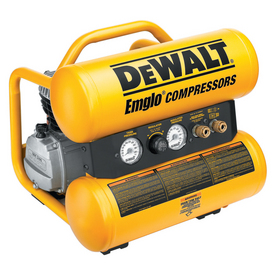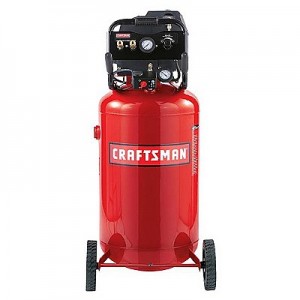Hope everyone is having a good week. With these days getting shorter, it’s becoming harder and harder to get work done outside. It’s tough to stay motivated. There are still a few outdoor tasks I’d like to take care of before it gets too cold.
One of the car related projects I’m going to try to knock out this weekend is restoring my headlights. You can use a corded or cordless drill for the required sanding, but I’ll be using a 90 degree die grinder, which is a pneumatic or air powered tool. This maybe the fifth or sixth different air powered tool I’ve used and talked about since I started blogging. I think it’s about time I discussed air tools and compressors. I’ll break this into two posts.
What You Need to Know About Air Compressors
If you’re planning on doing a good amount of home improvement and carpentry projects or you’re thinking about restoring a car or just doing some regular maintenance on your daily driver, you may want to purchase an air compressor. Air powered tools range from nail guns to impact wrenches and paint sprayers and can make whatever job you’re working on much, much easier. Nearly all air powered tools require a separate air source, which are generally air compressors. Air compressors come in a variety of sizes, capacities, configurations and price and it’s important you select the proper one for your job.
The best way to select an air compressor is to figure out what air tools you’ll be using and then you can narrow down your options further.
1. Pancake compressors. These smaller units are perfect for nail guns that aren’t going to be used in constant repetition. They’re lightweight and portable. They’re ideal for smaller jobs like installing door and window trim or hardwood floors. They’re also powerful enough for large framing nailers if you’re nailing 2x lumber. I used a pancake compressor and a framing nailer to build the walls for my shed and I’ll use it again when I refinish our basement. They cannot be used for spraying paint with an HVLP gun since these compressors are fine for small bursts of air, but not for prolonged uses. The price is usually pretty reasonable, running around $100-$300, although you can definitely find them cheaper on craigslist. Most often than not, if you buy them new, the air compressors come in kits with two or three nail guns. Pancake compressors are usually maintenance free, but have a shorter lifespan than ones that actually require maintenance.
2. Two tank compressors. I don’t think they’re called two tank compressors, but that’s what I’m going to call them. These are higher end versions of pancake compressors. They’re a little more powerful, a little pricier and are commonly used by contractors. They require regular maintenance, but can last longer than the pancake compressor. Generally, they still have the same tool usage restrictions, i.e., you shouldn’t paint with it. If you find a gently used model on ebay or craigslist, you may be in luck.
3. Large air compressors. These rock. They’re large for a reason. They can hold large amounts of air and are ideal for garage tools like impact wrenches for taking off lug nuts or painting cabinets or furniture with a paint gun. They can take multiple air tool connections so you and your friends can frame that basement wall up with a couple guns at the same time. The downside? They’re heavier and pricier. However, you can find new ones for roughly the same price as a new two tank model.
So that’s the basic variety of air compressors out there. I’d recommend a pancake compressor for you typical home DIYer if you’re thinking about picking one up.
Do you own a compressor? Are you thinking about getting one?